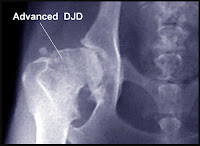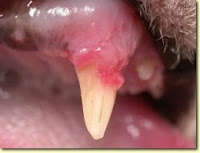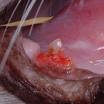
Friday, December 25, 2009
Tuesday, December 22, 2009
Happy Holidays!
Poppy and Sparkle had a great time racing through the snow. Lilly on the other hand did not enjoy it quite as much, and did everything she could to avoid any contact.
The Friendship holiday party is a highly anticipated event by all of our staff. This year was no exception and everyone had a lot of fun celebrating the season. The second annual Friendship Awards were handed out and I was honored to be given the Bright Ideas Award for this very blog. Staff members nominate colleagues for each category and then our management team selects the winners. It is a great way to acknowledge how hard our staff works every day.
The award winners are:
Rookie of the Year: Pamela Trujillo
Team Spirit: Amy Burgess
Outstanding Growth: Emmally Yarnell
Outstanding Growth: Dr. Nicola Moore
Client Service: Lizzie Wood
Client Service: JT Means
Dan Ferguson Memorial Patient Care: Juliana Dunbar
Dan Ferguson Memorial Patient Care: Shannon Huza
Admin/Inventory/Ops of the Year: Marcos Vasquez
Doctor of the Year: Dr. Amanda McMurphy
Client Care technician of the Year: Jen Lehmann
Veterinary Technician of the Year: Rebecca Monti

Internal medicine technician Mark with Drs. Choen, Begnoche, Hughes and McMurphy
I will be taking a brief break for the holidays and return on January 5th. If you are dying to read more from me I will be posting on the DCLadies blog January 31st. From all of us at Friendship we wish you a happy holiday and an exciting new year!
Thursday, December 17, 2009
There is no "whispering" with Cesar Millan's training techniques
My last two posts were about behavior modification -- what I, as well as the American Veterinary Society of Animal Behavior (AVSAB), feel is the right way to train your dog. Other lines of thought do exist, among them the method of dominance theory that includes the punitive training techniques made popular in the last few years by Cesar Millan in his Dog Whisperer television program.
 Millan’s training revolves around what known as dominance theory. According to this school of thought, you must establish yourself as the “alpha dog” while keeping your dog in a submissive role. A central theme of this training technique is that dogs that are fearful or aggressive are trying to obtain dominance over their owners or other pets in the house and must be put in their place, often times using force.
Millan’s training revolves around what known as dominance theory. According to this school of thought, you must establish yourself as the “alpha dog” while keeping your dog in a submissive role. A central theme of this training technique is that dogs that are fearful or aggressive are trying to obtain dominance over their owners or other pets in the house and must be put in their place, often times using force.
People who believe in dominance theory will tell you that it is based on studies of wolf behavior in the wild. What they may not be aware of is that these studies were conducted back in the 1960’s and have since been proven inaccurate. In just the past decade we have learned that wolves DO NOT fight to become the alpha dog of the pack; rather, their “packs” are families consisting of a mating pair heading up a group of their offspring.
 Here’s the main problem I see with dominance theory: maintaining your alpha-dog status requires that you routinely behave in a threatening manner – often using physical force--to those submissive to you. And so you must ask yourself: Is that the kind of relationship you really want to create? It’s certainly not one I want to share with my dogs.
Here’s the main problem I see with dominance theory: maintaining your alpha-dog status requires that you routinely behave in a threatening manner – often using physical force--to those submissive to you. And so you must ask yourself: Is that the kind of relationship you really want to create? It’s certainly not one I want to share with my dogs.
Dog Whisperer may be entertaining television, but it should not be used as an example of how to train your dog. Most of Millan’s techniques are primitive and often times inhumane. So much so, that there was a public outcry calling for National Geographic to remove the show after an episode in which Millan used a choke collar on an unruly dog until it collapsed gasping for breath. Though National Geographic did not stop airing the show, they now post a disclaimer cautioning people not to try these techniques at home.
Proponents of Millan argue that he saves animals that would have otherwise been euthanized for aggressive behavior. But it is commonly accepted in the behavioral community that, for most part, aggression in dogs is rooted in fear and mistrust. So the techniques of dominance theory can actually lead to an even more fearful animal. The AVSAB put out a position statement warning that using punishment training for behavioral problems can lead to “potential adverse effects which include but are not limited to: inhibition of learning, increased fear-related and aggressive behaviors and injury to animals and people interacting with animals”.
 Though I don’t agree with his training methods, I’m sure Millan believes he has the animal’s best interest at heart. He is a huge supporter of shelters and rescue foundations. His center in Los Angles takes in many abused and rescued animals that I’m sure would have otherwise been euthanized. Still, I feel that it’s my responsibility as a veterinarian and dog lover to clearly state that I do not believe in following his methods.
Though I don’t agree with his training methods, I’m sure Millan believes he has the animal’s best interest at heart. He is a huge supporter of shelters and rescue foundations. His center in Los Angles takes in many abused and rescued animals that I’m sure would have otherwise been euthanized. Still, I feel that it’s my responsibility as a veterinarian and dog lover to clearly state that I do not believe in following his methods.
In the end, it’s up to you to choose which method to use with your dog. On one hand, you have a method that may initially seem simpler, but is based on research that is no longer valid and requires you to frequently use physical force when your dog acts out. On the other hand, you can use behavior modification to create a situation where your dog has self-control and looks to you for guidance. My hope is that you will embrace the challenge of behavior modification, and use it to create a relationship with your dog that is based on trust and communication – never on fear and intimidation.
 Millan’s training revolves around what known as dominance theory. According to this school of thought, you must establish yourself as the “alpha dog” while keeping your dog in a submissive role. A central theme of this training technique is that dogs that are fearful or aggressive are trying to obtain dominance over their owners or other pets in the house and must be put in their place, often times using force.
Millan’s training revolves around what known as dominance theory. According to this school of thought, you must establish yourself as the “alpha dog” while keeping your dog in a submissive role. A central theme of this training technique is that dogs that are fearful or aggressive are trying to obtain dominance over their owners or other pets in the house and must be put in their place, often times using force.People who believe in dominance theory will tell you that it is based on studies of wolf behavior in the wild. What they may not be aware of is that these studies were conducted back in the 1960’s and have since been proven inaccurate. In just the past decade we have learned that wolves DO NOT fight to become the alpha dog of the pack; rather, their “packs” are families consisting of a mating pair heading up a group of their offspring.
 Here’s the main problem I see with dominance theory: maintaining your alpha-dog status requires that you routinely behave in a threatening manner – often using physical force--to those submissive to you. And so you must ask yourself: Is that the kind of relationship you really want to create? It’s certainly not one I want to share with my dogs.
Here’s the main problem I see with dominance theory: maintaining your alpha-dog status requires that you routinely behave in a threatening manner – often using physical force--to those submissive to you. And so you must ask yourself: Is that the kind of relationship you really want to create? It’s certainly not one I want to share with my dogs.Dog Whisperer may be entertaining television, but it should not be used as an example of how to train your dog. Most of Millan’s techniques are primitive and often times inhumane. So much so, that there was a public outcry calling for National Geographic to remove the show after an episode in which Millan used a choke collar on an unruly dog until it collapsed gasping for breath. Though National Geographic did not stop airing the show, they now post a disclaimer cautioning people not to try these techniques at home.
Proponents of Millan argue that he saves animals that would have otherwise been euthanized for aggressive behavior. But it is commonly accepted in the behavioral community that, for most part, aggression in dogs is rooted in fear and mistrust. So the techniques of dominance theory can actually lead to an even more fearful animal. The AVSAB put out a position statement warning that using punishment training for behavioral problems can lead to “potential adverse effects which include but are not limited to: inhibition of learning, increased fear-related and aggressive behaviors and injury to animals and people interacting with animals”.
In the end, it’s up to you to choose which method to use with your dog. On one hand, you have a method that may initially seem simpler, but is based on research that is no longer valid and requires you to frequently use physical force when your dog acts out. On the other hand, you can use behavior modification to create a situation where your dog has self-control and looks to you for guidance. My hope is that you will embrace the challenge of behavior modification, and use it to create a relationship with your dog that is based on trust and communication – never on fear and intimidation.
Tuesday, December 15, 2009
Behavior modification in real life
Last Thursday I began discussing the topic of behavior modification. I won't lie: behavior modification is a lot of work for you and your dog. But it's well worth it -- for your dog's mental health (as well as your own!)
 For the past few months, my dog Poppy has been enjoying a rebellious-teenage phase. She is somewhat of a handful--some might say a maniac. After listening to Dr. Overall I immediately attempted to start practicing behavior modification techniques with Poppy.
For the past few months, my dog Poppy has been enjoying a rebellious-teenage phase. She is somewhat of a handful--some might say a maniac. After listening to Dr. Overall I immediately attempted to start practicing behavior modification techniques with Poppy.
Let me be the first to tell you it has not been easy at all. The most difficult aspect is the consistency: I have to be mindful of teaching Poppy one hundred percent of the time.
Here is an example: every time we come to a door Poppy must sit and wait for me to tell her it is OK to walk through the door. I’m sure you can imagine that when I am running late for work and trying to get out of the house in a hurry, pausing to train Poppy is the last thing on my mind.

Another challenge is that Poppy loves barking like a fiend every time someone comes over. This is not enjoyable for any of the humans involved -- including my neighbors, who are just thrilled to hear Poppy’s loud, distinctive bark.
In an ideal world, when someone knocks on the door, Poppy will sit and look to me, waiting until I tell her it is OK to greet them. Our visitor will not enter the house until Poppy is sitting and waiting quietly. Note that I said “in an ideal world”! This bit of behavioral modification has been especially challenging, and is currently a work in progress. Though patience is not typically one of my strong suits, it is crucial to teach these techniques. When I have a guest standing outside my door waiting for ten or more minutes until Poppy stops barking, it is very difficult to maintain a calm demeanor…
Along with improving quality of life for yourself and your dog, learning how to behave can also have a significant impact on your dog’s physical health. Here is an example of why this is so important. Last week I saw a one-year-old dog on appointment for skin issues. He was a very sweet and VERY excited dog and would not pause in his leaping around the exam room long enough for me to do a complete exam. His owners were not concerned with his behavior as they felt this was normal for a dog of his age. It is not.
What will happen with this dog if he continues to act like a crazy creature during his visits to the hospital? For starters, when we need to perform common procedures such as trimming his nails or collecting blood, he will need to be tightly restrained. If he does not care for this (and most don’t) then he will protest more and become fearful of going to the vet. Through no fault of anyone’s he will develop a negative association and learn that people hold him down when he comes to see us. Each time he comes in his behavior will become progressively more fearful until he eventually tries to bite someone and is now aggressive at the vet.

This unpleasant scenario can be avoided if his owners start behavior modification so their dog learns to walk into the hospital and sit calmly with minimal restraint for his exam or blood draw. For my part, I always try to show my patients that being at Friendship is a happy event, by giving them lots of treats and pats when I see them.
While behavior modification is difficult to execute it is also extremely important. I know there are a lot of other “training” techniques out there and on Thursday I will discuss these with a focus on famed dog “whisperer” Cesar Millan.
 For the past few months, my dog Poppy has been enjoying a rebellious-teenage phase. She is somewhat of a handful--some might say a maniac. After listening to Dr. Overall I immediately attempted to start practicing behavior modification techniques with Poppy.
For the past few months, my dog Poppy has been enjoying a rebellious-teenage phase. She is somewhat of a handful--some might say a maniac. After listening to Dr. Overall I immediately attempted to start practicing behavior modification techniques with Poppy.Let me be the first to tell you it has not been easy at all. The most difficult aspect is the consistency: I have to be mindful of teaching Poppy one hundred percent of the time.
Here is an example: every time we come to a door Poppy must sit and wait for me to tell her it is OK to walk through the door. I’m sure you can imagine that when I am running late for work and trying to get out of the house in a hurry, pausing to train Poppy is the last thing on my mind.
Another challenge is that Poppy loves barking like a fiend every time someone comes over. This is not enjoyable for any of the humans involved -- including my neighbors, who are just thrilled to hear Poppy’s loud, distinctive bark.
In an ideal world, when someone knocks on the door, Poppy will sit and look to me, waiting until I tell her it is OK to greet them. Our visitor will not enter the house until Poppy is sitting and waiting quietly. Note that I said “in an ideal world”! This bit of behavioral modification has been especially challenging, and is currently a work in progress. Though patience is not typically one of my strong suits, it is crucial to teach these techniques. When I have a guest standing outside my door waiting for ten or more minutes until Poppy stops barking, it is very difficult to maintain a calm demeanor…
Along with improving quality of life for yourself and your dog, learning how to behave can also have a significant impact on your dog’s physical health. Here is an example of why this is so important. Last week I saw a one-year-old dog on appointment for skin issues. He was a very sweet and VERY excited dog and would not pause in his leaping around the exam room long enough for me to do a complete exam. His owners were not concerned with his behavior as they felt this was normal for a dog of his age. It is not.
What will happen with this dog if he continues to act like a crazy creature during his visits to the hospital? For starters, when we need to perform common procedures such as trimming his nails or collecting blood, he will need to be tightly restrained. If he does not care for this (and most don’t) then he will protest more and become fearful of going to the vet. Through no fault of anyone’s he will develop a negative association and learn that people hold him down when he comes to see us. Each time he comes in his behavior will become progressively more fearful until he eventually tries to bite someone and is now aggressive at the vet.
This unpleasant scenario can be avoided if his owners start behavior modification so their dog learns to walk into the hospital and sit calmly with minimal restraint for his exam or blood draw. For my part, I always try to show my patients that being at Friendship is a happy event, by giving them lots of treats and pats when I see them.
While behavior modification is difficult to execute it is also extremely important. I know there are a lot of other “training” techniques out there and on Thursday I will discuss these with a focus on famed dog “whisperer” Cesar Millan.
Tuesday, December 8, 2009
Holiday Happenings for DC dogs

'Tis the season and this weekend you have multiple opportunities to have your pet's picture taken with Santa to raise money for two charities that are very close to my heart.
 On Saturday Dogtopia in Woodbridge from 2 to 5 pm, the DC Chapter of the National Canine Cancer Foundation (NCCF) hosts their first event since forming this fall. The NCCF funds grants for "cancer researchers who are working to save lives, find cures, better treatments and accurate, cost effective diagnostic methods in dealing with canine cancer". Not only will they have a Santa on hand to pose with your dog, you can also purchase NCCF pink paw merchandise.
On Saturday Dogtopia in Woodbridge from 2 to 5 pm, the DC Chapter of the National Canine Cancer Foundation (NCCF) hosts their first event since forming this fall. The NCCF funds grants for "cancer researchers who are working to save lives, find cures, better treatments and accurate, cost effective diagnostic methods in dealing with canine cancer". Not only will they have a Santa on hand to pose with your dog, you can also purchase NCCF pink paw merchandise.
 Please come out this weekend to raise money for these wonderful charities dedicated to improving the lives of pets everywhere.
Please come out this weekend to raise money for these wonderful charities dedicated to improving the lives of pets everywhere.
 On Saturday Dogtopia in Woodbridge from 2 to 5 pm, the DC Chapter of the National Canine Cancer Foundation (NCCF) hosts their first event since forming this fall. The NCCF funds grants for "cancer researchers who are working to save lives, find cures, better treatments and accurate, cost effective diagnostic methods in dealing with canine cancer". Not only will they have a Santa on hand to pose with your dog, you can also purchase NCCF pink paw merchandise.
On Saturday Dogtopia in Woodbridge from 2 to 5 pm, the DC Chapter of the National Canine Cancer Foundation (NCCF) hosts their first event since forming this fall. The NCCF funds grants for "cancer researchers who are working to save lives, find cures, better treatments and accurate, cost effective diagnostic methods in dealing with canine cancer". Not only will they have a Santa on hand to pose with your dog, you can also purchase NCCF pink paw merchandise.If you can't make it out to Woodbridge, on Sunday from 12 to 3 pm at Fresh Boutique in Georgetown, Fashion for Paws is having a fundraiser benefiting the animals and programs of the Washington Humane Society. There will be holiday themed pet portraits done while you sip mimosas and snack on tasty treats. Fresh Boutique will be donating 10% of all proceeds from the day to Fashion for Paws. WHS's mobile adoption center will also be there with dogs and cats in need of adoption. Lily and I will be there to check things out, she has a very cute Christmas tree sweater that I plan on making her wear.  Another great gift option is the 2 Dogs, 2000 Miles Cancer Can't Keep a Good Dog Down 2010 Calender. I received mine last week and was touched by the pictures and stories of courageous dogs in their battle with cancer.
Another great gift option is the 2 Dogs, 2000 Miles Cancer Can't Keep a Good Dog Down 2010 Calender. I received mine last week and was touched by the pictures and stories of courageous dogs in their battle with cancer.
 Another great gift option is the 2 Dogs, 2000 Miles Cancer Can't Keep a Good Dog Down 2010 Calender. I received mine last week and was touched by the pictures and stories of courageous dogs in their battle with cancer.
Another great gift option is the 2 Dogs, 2000 Miles Cancer Can't Keep a Good Dog Down 2010 Calender. I received mine last week and was touched by the pictures and stories of courageous dogs in their battle with cancer. Please come out this weekend to raise money for these wonderful charities dedicated to improving the lives of pets everywhere.
Please come out this weekend to raise money for these wonderful charities dedicated to improving the lives of pets everywhere. Thursday, December 3, 2009
Fish oil for everyone!

There is much debate in veterinary medicine about what you should be feeding your dog but one thing everyone agrees on is the amazing properties of omega-3 fatty acids. These helpful little guys are abundant in certain plants and marine fish oils and have been shown to help with treatment of common abnormalities for our dogs and cats.
Allergic skin disease, itching and ear infections are frustrating and frequently treated skin conditions of both dogs and cats. Multiple studies have shown that using high doses of fatty acids for six weeks or more decreased itchiness in greater than fifty percent of the study patients. Those that did not experience a decrease in itching, did show a decrease in skin redness or swelling associated with allergies. Fatty acids have also been found to have a synergistic effect with antihistamines which even further decreases a patients discomfort from allergies.
 Another common ailment for dogs and cats is arthritis, especially given the obesity rates in companion animals. Arthritis or degenerative joint disease (DJD) occurs when abnormal motility in a joint causes the protective cartilage of that joint to rub against each other in a pathologic manner. This results in a wearing down of cartilage until you have one bone grinding on another causing pain and inflammation. Laboratory studies looking at how omega-3 fatty acids affected canine cartilage metabolism found that our friend the fatty acid decreased cartilage degradation in experimental tissue samples.
Another common ailment for dogs and cats is arthritis, especially given the obesity rates in companion animals. Arthritis or degenerative joint disease (DJD) occurs when abnormal motility in a joint causes the protective cartilage of that joint to rub against each other in a pathologic manner. This results in a wearing down of cartilage until you have one bone grinding on another causing pain and inflammation. Laboratory studies looking at how omega-3 fatty acids affected canine cartilage metabolism found that our friend the fatty acid decreased cartilage degradation in experimental tissue samples.What does that mean? It means adding high levels of fatty acids to your dog’s diet could protect
 the cartilage thus slowing progression of DJD. Hill’s created J/D which is a prescription diet for animals with arthritis containing high levels of fatty acids. In developing this food they did numerous studies and found that animals with arthritis showed increased range of motion and weight bearing, along with decreased pain after feeding the J/D diet for three to six months.
the cartilage thus slowing progression of DJD. Hill’s created J/D which is a prescription diet for animals with arthritis containing high levels of fatty acids. In developing this food they did numerous studies and found that animals with arthritis showed increased range of motion and weight bearing, along with decreased pain after feeding the J/D diet for three to six months.In addition, a follow up study found that feeding the J/D allowed owners to decrease the dose of nonsteroidal anti-inflammatory drugs such as Rimadyl while maintaining a comparable level of comfort. The amazing fatty acid can not only help prevent DJD but also aid in managing pain.
Fatty acids have also been thought to improve treatment of chronic kidney disease, cancer and heart failure. Essentially they have the potential to help with so much and there is relatively no downside. The most common side effects are soft stool or diarrhea, if you notice this just back off on the amount you are adding to your pet’s diet. It is also reported that extremely high levels of dietary fatty acids can cause decreased blood clotting ability but this is very rare.
 There are multiple ways to increase the amount of fatty acids to your pet’s diet. An easy way would be to feed Hill’s J/D diet, the downside is it is expensive and once exposed to air fatty acids begin to break down and become less effective. There are also many types of veterinary products on the market as well. I find it easiest to buy fish oil capsules from Whole Foods (or any other vitamin store) and toss a few in with my dog’s food. The “dose” is 180 mg EPA per 10 pounds but I give my dogs two to three times this amount and have not had any problems.
There are multiple ways to increase the amount of fatty acids to your pet’s diet. An easy way would be to feed Hill’s J/D diet, the downside is it is expensive and once exposed to air fatty acids begin to break down and become less effective. There are also many types of veterinary products on the market as well. I find it easiest to buy fish oil capsules from Whole Foods (or any other vitamin store) and toss a few in with my dog’s food. The “dose” is 180 mg EPA per 10 pounds but I give my dogs two to three times this amount and have not had any problems. Tuesday, December 1, 2009
Kitty Cavities
 Here is another posting on dental disease because it is a topic vitally important to your pet’s overall health. I would like to highlight lesions that cats get called feline odontoclastic resportive lesions or FORLs. These are similar to human cavities in that there is a defect in the enamel of the tooth and it is very painful. If your cat is over the age of 5 years old then there is a 72% chance a FORL is present.
Here is another posting on dental disease because it is a topic vitally important to your pet’s overall health. I would like to highlight lesions that cats get called feline odontoclastic resportive lesions or FORLs. These are similar to human cavities in that there is a defect in the enamel of the tooth and it is very painful. If your cat is over the age of 5 years old then there is a 72% chance a FORL is present.These nasty FORLs are usually found along the outer surface of the tooth where it meets the gum line. They can present in many stages requiring dental x-rays to determine if the tooth root is involved. At the beginning stage an enamel defect is present which then progresses as the FORL penetrates the tooth and invades the pulp cavity. As the lesion develops it becomes increasingly more painful for your cat. Treatment entails a full dental exam under anesthesia and surgical extraction of the offending tooth.
Veterinarians are not sure why this happens but we do know it is extremely painful and unpleasant for your kitty. While clinical signs such as difficulty eating, drooling, bleeding at the site and dropping food from the mouth may be present; some cats to not show any obvious signs of pain. You should check your cat’s teeth monthly for any obvious FORLs which appear as pink or red defects in the tooth where it meets the gum. In addition, at your yearly visit to Friendship your veterinarian will perform as thorough an oral exam as your cat will tolerate (cats can be very opinionated about who they allow to look into their mouth).



As with all dental disease, FORLs can lead to increased bacteria circulating in the blood stream resulting in liver, kidney and heart disease. Finding and treating these lesions early will result in a healthier, happier kitty.
Subscribe to:
Posts (Atom)







